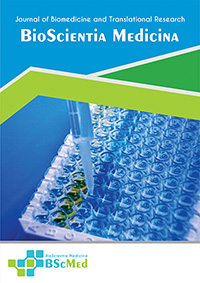Main Article Content
Abstract
Background: The optimal surgical approach for repairing a vesicovaginal fistula (VVF) remains a subject of significant clinical debate. Both transabdominal and transvaginal techniques have distinct advantages and disadvantages, leading to a dilemma in surgical decision-making. This systematic review and meta-analysis aims to provide a comprehensive, evidence-based comparison of the two approaches, focusing on surgical success, complications, and perioperative outcomes.
Methods: This review was conducted and reported in accordance with the PRISMA 2020 guidelines. A systematic search of PubMed, Scopus, and Web of Science was performed for comparative studies published between January 2015 and August 2025. We included studies directly comparing transabdominal and transvaginal VVF repair. The primary outcome was surgical success (fistula closure). Secondary outcomes included overall complications, mean operative time, and length of hospital stay. A random-effects model was used for meta-analysis to calculate pooled Odds Ratios (OR) and Mean Differences (MD) with 95% Confidence Intervals (CI).
Results: From 1,284 articles identified, seven comparative studies involving 678 patients (335 transvaginal, 343 transabdominal) were included. The meta-analysis revealed no statistically significant difference in surgical success rates between the transvaginal and transabdominal approaches (OR 1.12, 95% CI 0.68,1.85, p=0.65; I²=21%). However, the transvaginal approach was associated with a significantly lower rate of overall complications (OR 0.45, 95% CI 0.28,0.73, p=0.001; I²=0%). Furthermore, the transvaginal approach demonstrated significantly shorter mean operative times (MD -58.45 minutes, 95% CI−75.60,−41.30, p<0.00001; I²=88%) and a shorter mean length of hospital stay (MD -3.15 days, 95% CI −4.01,−2.29, p<0.00001; I²=92%).
Conclusion: While both surgical approaches yield comparable fistula closure rates, the transvaginal technique offers a superior safety and efficiency profile, with significantly fewer complications, shorter operative times, and reduced hospitalization. These findings suggest that the transvaginal route should be considered the preferred approach for anatomically suitable fistulas, though surgeon expertise and fistula characteristics remain paramount in resolving the VVF repair dilemma.
Keywords
Article Details
As our aim is to disseminate original research article, hence the publishing right is a necessary one. The publishing right is needed in order to reach the agreement between the author and publisher. As the journal is fully open access, the authors will sign an exclusive license agreement.
The authors have the right to:
- Share their article in the same ways permitted to third parties under the relevant user license.
- Retain copyright, patent, trademark and other intellectual property rights including research data.
- Proper attribution and credit for the published work.
For the open access article, the publisher is granted to the following right.
- The non-exclusive right to publish the article and grant right to others.
- For the published article, the publisher applied for the Creative Commons Attribution-NonCommercial-ShareAlike 4.0 International License.





